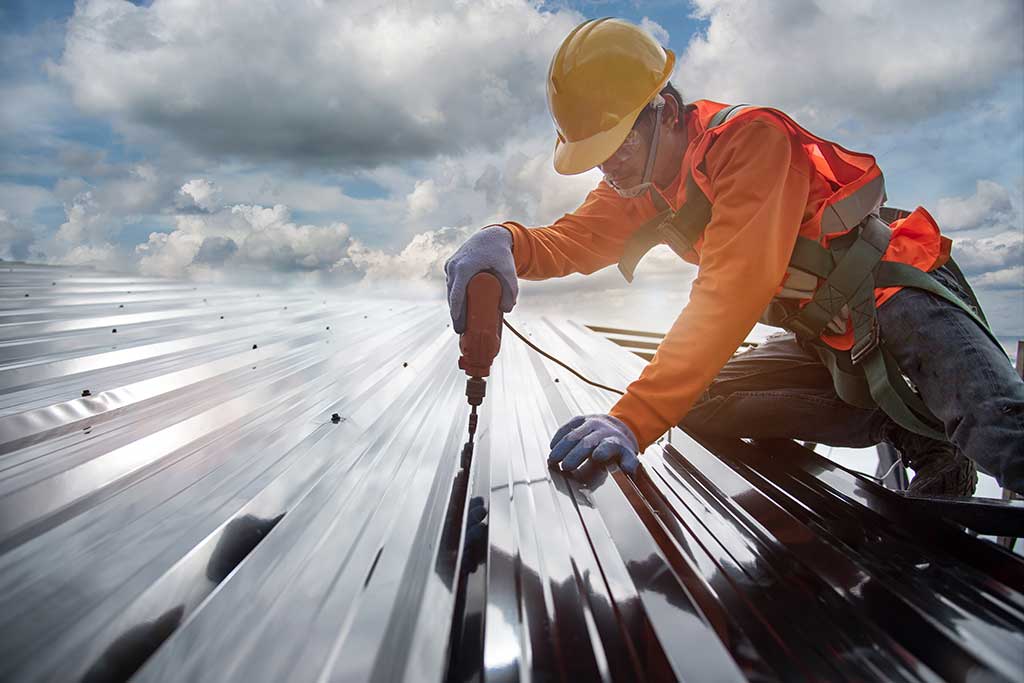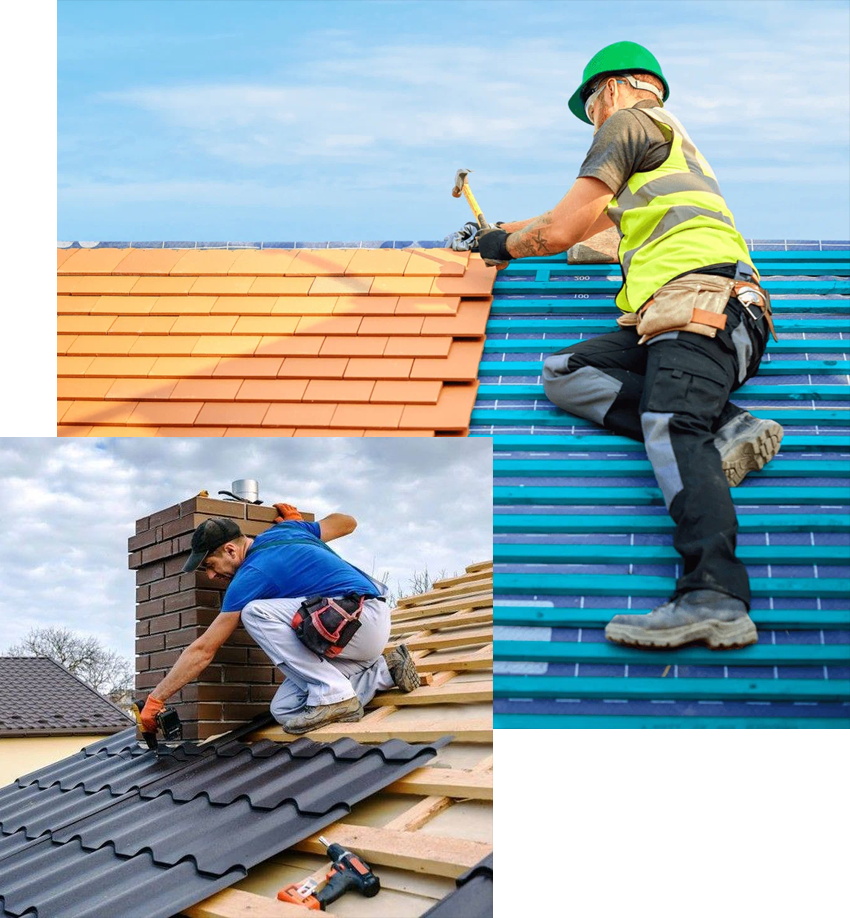Quality Cuyahoga Falls Roof Repairs That Ensure the Long-Term Safety of Your Home
Quality Cuyahoga Falls Roof Repairs That Ensure the Long-Term Safety of Your Home
Blog Article
A Comprehensive Overview to Effective Roofing Apartment Roofing Installation
The ins and outs of level roof covering installment need a careful strategy, beginning with a detailed understanding of different flat roofing system types and the important materials required for optimum efficiency. An effective installment pivots not just on the selection of products however likewise on the preparation and implementation of each action included in the procedure. As we explore the important phases from prep work to maintenance, it ends up being apparent that overlooking also minor information can substantially affect the roof covering's durability and effectiveness. What particular methods can make certain a seamless installation that withstands the examination of time?
Understanding Apartment Roofing System Kind
When considering level roofing systems, it is necessary to comprehend the different kinds readily available, as each offers unique benefits and disadvantages tailored to certain needs. The most common types of level roofs include Built-Up Roof (BUR), Changed Bitumen, and Single-Ply membranes.
Built-Up Roof covering consists of multiple layers of asphalt and crushed rock, providing superb durability and climate resistance. It is specifically useful in locations vulnerable to serious climate problems however might need more maintenance because of its complicated building.
Modified Bitumen is a prominent choice for its convenience of installment and versatility. It usually uses a self-adhesive or torch-applied method, which can be helpful for quick repair work and long-term efficiency. However, its lifespan can be much shorter contrasted to BUR.
Single-Ply membrane layers, consisting of Thermoplastic Olefin (TPO) and Ethylene Propylene Diene Monomer (EPDM), are identified for their light-weight nature and energy efficiency. These products are often chosen for industrial buildings due to their cost-effectiveness and ease of installment (Cleveland Roofing Specialists). They may not give the very same level of insulation as other choices.
Each roof type requires mindful factor to consider based upon environment, budget plan, and details project requirements.
Crucial Materials for Flat Roof Covering
A variety of essential materials are important for the effective installation of flat roof. The option of products directly impacts toughness, performance, and general effectiveness.
Among the key products is the roof membrane layer, which can be built from various materials such as polycarbonate polyolefin (TPO), ethylene propylene diene monomer (EPDM), or PVC. Each type supplies special benefits, consisting of UV resistance and versatility, which are vital for long term efficiency.
Along with the membrane layer, insulation materials play a significant role in power performance. Inflexible foam boards or polyisocyanurate insulation are preferred options, as they provide excellent thermal resistance and wetness administration.
Furthermore, roofing adhesives and sealants are crucial for guaranteeing a watertight setup. These items should be suitable with the selected membrane layer to avoid wear and tear with time.
Getting Ready For Installation
Correct prep work is necessary for a successful level roofing installation, as it lays the foundation for a sturdy and effective roof. Begin by conducting a complete inspection of the existing roofing system structure. Try to find indicators of damage, including leaks, rot, or poor drainage, which could jeopardize the brand-new roofing system. Guarantee that the underlying products are sound and can support the weight of the brand-new roof covering elements.
Following, gather all necessary devices and products, making sure that they satisfy industry criteria. This includes waterproof membrane layers, insulation, navigate here blinking, and bolts. Familiarize yourself with the manufacturer's specifications, as adherence to these guidelines is essential for guarantee purposes.
Consider weather condition conditions; stay clear of installation during heavy rainfall or severe temperatures, which can impact product performance. By taking these primary steps, you can improve the likelihood of an effective flat roofing setup that meets both aesthetic and architectural requirements.
Step-by-Step Installation Refine
With the groundwork developed through thorough preparation, the next stage includes executing the level roofing installment methodically. This action is vital for keeping the roof covering's integrity over time.
Following the vapor barrier installation, lay down insulation boards, guaranteeing they fit securely together to decrease thermal linking. Safeguard the insulation with proper fasteners based on the roofing system type and neighborhood structure codes. When the insulation is in area, it's time to apply the roofing membrane layer. Depending upon the chosen product-- such as TPO, EPDM, or customized bitumen-- mount the membrane according to the manufacturer's specifications.
Make sure correct overlap at edges and joints to create a water tight seal. Utilize adhesives, mechanical bolts, or heat welding as needed. Install blinking around boundaries, vents, and any type of roofing system penetrations to boost waterproofing. After installment, carry out a thorough evaluation to determine any type of prospective issues prior to concluding the project, making certain a robust and trusted level roof system.
Maintenance Tips for Durability
Regular maintenance is important to guarantee the durability and efficiency of a flat roof covering. One of the main jobs is to carry out regular examinations at least two times a year, preferably in spring and autumn. During these assessments, seek signs of wear, such as blisters, cracks, or pooling water, which can suggest underlying concerns.

Making sure correct drainage is essential to avoid water build-up. Inspect and clear gutters, downspouts, and scuppers to ensure unhampered water circulation. Additionally, check seals around vents, skylights, and various other penetrations for any kind of signs of degeneration, using caulk or sealant as required to keep a leak-proof obstacle.
Lastly, take into consideration expert upkeep solutions every couple of years for detailed maintenances. By adhering to these maintenance ideas, you can considerably extend the life of your level roof, ensuring it continues to be a dependable guard against the aspects.
Conclusion
Efficient level roofing setup necessitates an organized strategy incorporating extensive examinations, material choice, and meticulous prep work. Adhering to the detailed actions throughout the setup process makes sure the appropriate application of roof membranes and insulation while enhancing waterproofing via reliable blinking installation.
The intricacies of level roof installment need a thorough approach, beginning with an extensive understanding of different level roof kinds and the necessary products required for ideal performance.Proper prep work is essential for a successful level roof covering installation, as it lays the groundwork for a reliable and durable roof system. After installment, perform a comprehensive evaluation to identify any kind of prospective problems prior to wrapping up the project, guaranteeing a reliable and robust level roof system.

Report this page